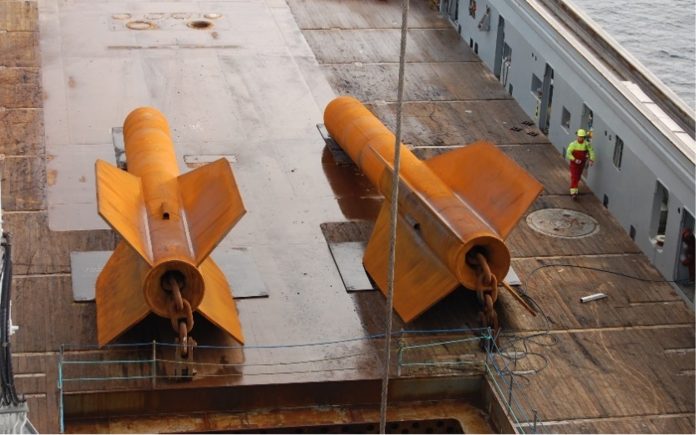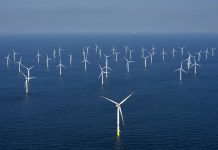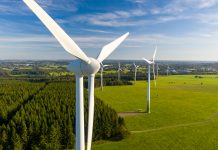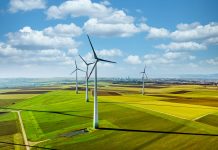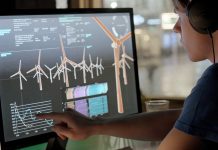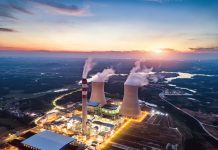Jon Tore Lieng, Managing Director of Deep Sea Anchors AS, discusses the critical role of the Deep Penetrating Anchor concept for floating wind farms
Effectively harnessing offshore wind presents a valuable opportunity to increase energy supplies. Floating wind turbines present several advantages over traditional fixed turbines in more shallow waters. Dr Jon Tore Lieng from Deep Sea Anchors and colleagues have developed a dart-shaped type of anchor coined the Deep Penetrating Anchor (DPA) to hold the structures in place while reducing both the costs and complexity associated with installation where cohesive seabed sediments are realised.
Floating wind turbines are a more recent innovation. As the name suggests, the turbines are mounted on floating structures that are moored and anchored rather than directly fixed to the seabed. The first large, industrial-scale floating wind farm (HiPR-Wind) was established in Scotland in 2015, and more recently, Hywind Tampen in 2022/2023. Ongoing and future projects have even more ambitious plans to take advantage of deeper and more challenging waters and to put greater numbers of wind turbines in place.
Anchor designs for floating wind turbines
Dr Jon Tore Lieng is an expert in anchoring systems for floating offshore structures such as oil and gas platforms, drilling rigs, and wind farms. He explains that various anchor designs for floating wind turbines are available, each with specific installation requirements. These include drag embedment anchors such as fluke anchors, where the anchor is dragged across the seabed until it realises sufficient holding capacity. These are extensively used with temporary installations but may also be used for single-line permanent mooring. Since they are drag-embedded, they need to be proof-loaded up to design requirements in that the anchor’s precise embedment depth is not known. Proof loading may require several vessels and or additional marine operations and equipment to fulfil the prescribed loading capacities.
Another design is a suction anchor (SA), where a cylinder, closed at the top end, is lowered onto the seabed where it self-penetrates to a certain depth and then suction embedded (therefore coined suction anchor) by pumping out the enclosed water. Suction anchors may have three mooring lines attached (anchor sharing) to three wind turbines, which normally require large crane vessels and may take from six to twelve hours to install, making marine operations relatively expensive.
Alternatively, a driven pile can be used, which involves the installation of a steel pipe that is driven into the seabed to act as an anchor point. However, deep waters, say over 150 metres, require lengthy and massive hydraulic hoses and large hydraulic hammers, which require ditto large installation vessels and equipment. Whilst suction and driven pile anchors can have large holding capacities, the installation is evidently not only complex and time-consuming but also costly.

Dynamically Installed Anchors (DIAs)
Dr Lieng is pioneering novel approaches to reduce the complexity and cost of installing anchoring systems for floating wind farms and to support the move of oil and gas exploration into deeper waters. To this end, he favours the concept of DIAs, which are used where the seabed soil sediments consist of cohesive material such as clay. These anchors are dropped from a certain height above the seabed, that is, typically from a height of 70-80 metres, reaching approx. 100 km/h, allowing gravitational forces to effectively embed them in the seabed some 20-30 metres, depending on the strength of the seabed sediments. This makes their installation much easier to accomplish than for other anchor designs, especially in deep or challenging waters.
His extensively tested DPA is one type of DIA, which will vary in size and mass depending on capacity design requirements to ensure that when the anchor is released, it builds up enough momentum to penetrate deep into the seabed. Capacities of more than 1,000 tonnes can be realised, which are sufficient for sizeable 15-megawatt wind turbines. The DPA is approved by Det Norske Veritas (which sets standards for offshore structures) and is a qualified technology within Equinor, an offshore wind developer and operator that has supported the development of the concept.
To ensure that these anchors are installed as designed, a monitoring unit is mounted on the side of the anchor. This unit is designed to be recoverable and provides the team on the surface with information about how the anchor descended through the water – recording any pitch or yaw, velocity, anchor verticality and acquired penetration depth. From these data, the team on the surface can document that the anchor is installed as designed, i.e., has reached minimum penetration and verticality.
Anchor design and sharing
One of the most significant benefits of this anchor design is the installation simplicity. Dr Lieng explains that this means that the requirement for huge construction vessels is reduced as smaller vessels of type Anchor Handling Tugs equipped with Anchor Recovery Frames (ARF) can install DPAs with relative ease.
Anchor sharing will reduce the total number of required anchors in a floating wind farm, where a maximum of three lines per anchor is typical. However, all floating wind farms will have a large percentage of anchors with only one mooring line along the perimeter of the farm, as shown in Fig. 2. These can be DPAs.
This project has received funding from Norwegian Research Council, BOA Offshore, REINERTSEN Engineering, Statoil, Equinor

This work is licensed under Creative Commons Attribution-NonCommercial-NoDerivatives 4.0 International.

